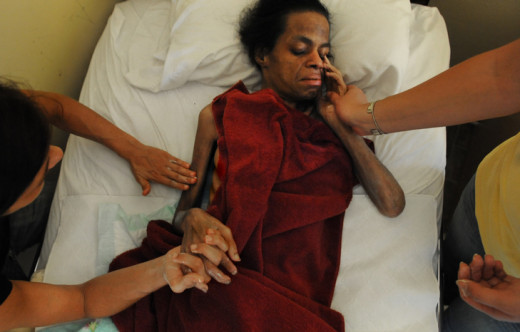Balantidiasis And Pneumocystis Carini Infections: Clinical Manifestations, Diagnosis And Treatments
How To Diagnose And Treat Balantidiasis

Clinical Manifestations Of Balantidiasis
Balantidiasis is an infection by Balantidium Coli which affects the large intestine of man. Balantidium Coli is a large ciliate (200u X 80u), seen actively motile with the help of numerous clia, in fresh specimens of stools. The cysts are rounded and smaller. These are seen in carriers. Infection occurs when cysts are ingested. It is primarily a pathogen of pigs. Malnourished persons with low gastric acidity are more commonly infected. Compared to giardiasis and amoebiasis, incidence of balantidiasis is very rare in India, but it is encountered from time to time.
Pathology: Balantidium Coli primary invades the colonic mucosa and produces flask-shaped ulcers which resemble amoebic ulcers, proteolytic enzymes and hyaluronidase are secreted by the organism. The mucosa shows infiltration by lymphocytes and polymorphs around the ulcers. Secondary infection and hemorrhage may occur as complications. In fulminant cases, necrosis of the colon and perforation may result rarely. In addition to the colonic lesions, uterine, vaginal and vesical lesions may also develop at times.
Clinical Features: These resemble cases of mild to moderately severe amoebic dysentery. Mild infections may be asymptomatic.
Diagnosis: It is established by demonstrating the active parasite in feces of cysts indicates the carrier state.
Treatment: Tetracycline given in divided doses of 10 mg/Kg/daily for 10 days eliminates the infection. Many cases show a tendency towards spontaneous remission and development of carrier state. Metronidazole is also effective but the results are not consistent.
How To Diagnose Pneumocystic Carinii Infection In HIV/AIDS Pateints

Infectious Diseases
Clinical Manifestations Of Pneumocystic Carinii Infections
Morphology and classification: Pneumocystis carinii is an organism which is most likely a protozoan. It is a pathogen of low virulence. It measures 2 to 4u in length and is round or elongated. Its lifecycle is unknown. It is seen widely in nature in man and several animals and infection spreads from person to person by respiratory route. In those with suppression of immunological function, it becomes invasive and causes pneumonia.
Pneumocystis Carinii infection complicates hematological malignancies, immunosuppressant therapy and organ transplantation. Homosexual men and subjects with acwuired immunodeficiency states (AIDS) show predilection. In children, pneumocystosis may supervene on congenital immune deficiency states and protein-calorie malnutrition. Immunodeficiency also predisposes to infection by cytomegalovirus, Candida and Mycobacteria which may coexist with pneumocytosis.
Diagnosis: Pneumocystis Pneumonia should be suspected when fever and respiratory symptoms occur in immunosuppressed individuals. Chest Skiagram shows diffuse interstitial infiltrates. The organisms can be demonstrated in bronchial aspirates or lung biopsy specimen taken at bronchoscopy or by needle biopsy. Though, positive results confirm the diagnosis, negative results do not exclude the condition.
Treatment: The patient may require respiratory intensive care. Cotrimaxazole in doses up to 6 to 7g/day in divided doses for 2 weeks is beneficial. Pentamidine isethionate given intramuscularly in a dose of 2 to 4 mg/Kg body weight daily for 10 to 14 days is also effective. The underlying condition should also receive attention.
© 2014 Funom Theophilus Makama









